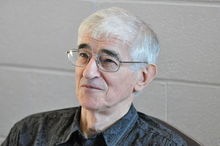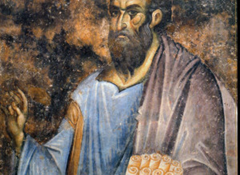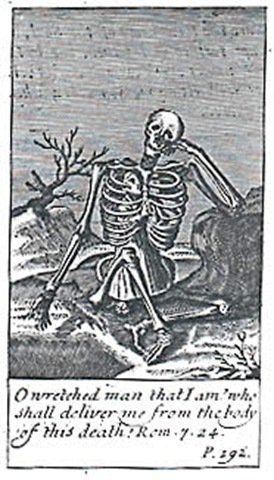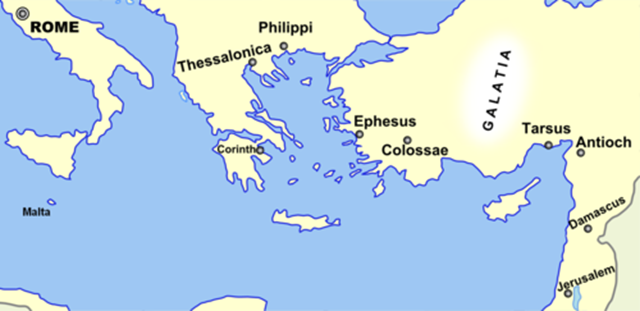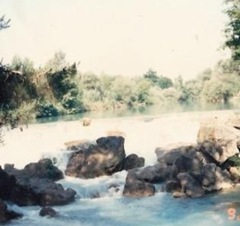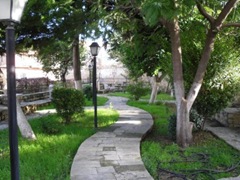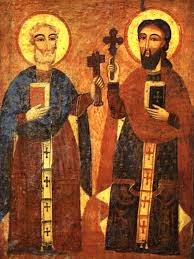 Many scholars suggest that the brother of Jesus known as James the Just is the most forgotten man in Christian history. “I didn’t know Jesus had a brother,” is often the first response when his name is mentioned. The evidence is compelling; according to numerous references in the canonical gospels of the New Testament, the book of Acts of the Apostles, Paul’s authentic letters, contemporary historian Josephus, the non-canonical gospel of Thomas, and early histories of the church, Jesus not only had a brother, but a very important brother, the primary leader of the Jesus movement in the decades following the crucifixion.
Many scholars suggest that the brother of Jesus known as James the Just is the most forgotten man in Christian history. “I didn’t know Jesus had a brother,” is often the first response when his name is mentioned. The evidence is compelling; according to numerous references in the canonical gospels of the New Testament, the book of Acts of the Apostles, Paul’s authentic letters, contemporary historian Josephus, the non-canonical gospel of Thomas, and early histories of the church, Jesus not only had a brother, but a very important brother, the primary leader of the Jesus movement in the decades following the crucifixion.
What? The leader of the early church? Why don’t the folks in the pews know about this? How could such an influential person in the early history of Christianity be forgotten? Ironic. Or is it? Could it be that the church has largely ignored James precisely because of his relationship to Jesus? Could it be that he was not forgotten but intentionally erased from the story?
It is axiomatic that the victors write the history, and James was the leader of the losing side in the first great conflict in church history. After the crucifixion, the original followers of the slain messiah regrouped in Jerusalem, including Peter and the other disciples, and it was here that James soon ascended to leadership. This core group of proto-Christians (it is anachronistic to apply “Christian” to this early movement) was Jewish.
Enter an outsider. A Greek-educated Diaspora Jew who insisted that he had been called to be an apostle to the Gentiles, who argued that traditional rules of Israelite religion didn’t apply to his Gentile converts, who became an independent missionary in defiance of James’ authority, and who established his own power base in regions far beyond the influence of Jerusalem. Paul of Tarsus was the thorn in the side of James.
Although James and the Jerusalem establishment may have won the early skirmishes, the emerging Christian church would soon be Pauline and Gentile, due in no small part to the vagaries of history and the Jewish civil war. With Jerusalem destroyed, just a few years after the deaths of Paul and James, Jewish Christians could not contend with the Paulines who were better suited for survival in the Greco-Roman world. Although vestiges of this internecine conflict persisted and may be traced through the compilation of the gospels and into the second century, the developing Christian orthodoxy was decidedly Pauline and the legacy of James diminished.
To 21st century sensibilities, the ancient controversies over circumcision, dietary rules, and Sabbath and festival observances seem unimportant. Why should old conflicts be dredged up? Why is the current scholarly rediscovery of James important or even relevant?
In a word, Christology. Nothing has so divided Christians from the earliest days to the present–scholars, clergy and laity–than the conflicting answers to Jesus’ nagging question, “Who do you say that I am?” For some, it is a test, and the correct dogmatic response assures one’s salvation; for others, however, the question is a call to wonder.
In the early centuries, there were two great centers of Christian scholarship located in Alexandria of Egypt (the 2nd largest city of the Roman empire after Rome itself) and Antioch of Syria (the third largest city). Christian scholars from Antioch argued for the humanity of Jesus while competing scholars across the Mediterranean in Alexandria stressed his divinity. A scholar named Arius, who may have studied in each city, proposed a middle ground–that Jesus was somewhere between divine and human. Emperor Constantine convened the Council at Nicaea to settle the dispute, and a political compromise ensued. Was Jesus human? Yes. Was Jesus divine? Yes. Instead of either/or, the assembled bishops declared both/and. Truly human and truly divine was the political compromise, hammered out first at Nicaea and then at Chalcedon, that may have settled the debate de jure but not de facto.
Was the issue resolved? If so, why do modern-day evangelicals accuse the rest of Christendom of being soft on the divinity of Jesus? Why do liberal scholars, including many in the Jesus seminar, stress the humanity of the man from Nazareth?
Enter James. James is relevant to the ongoing Christological controversies. James scholar Robert Eisenman ends his tome (James the Brother of Jesus) with this challenging statement, “Who and whatever James was, so was Jesus.” Many would disagree, but Eisenman’s statement frames the debate and defines the importance of James scholarship. This also brings us back to the original premise that James is not merely forgotten but has been intentionally written out of church history.
Ireneaus, the second-century heresy hunter, saw the problem, and he declared the views of the Jewish-Christian Ebionites (heirs of the James legacy?) to be heretical with a deficient Christology: “their opinions … represented Jesus as having not been born of a virgin, but as being the son of Joseph and Mary according to the ordinary course of human generation.”
St. Jerome saw the problem. Around 400 CE, Jerome suggested that James and the other siblings of Jesus mentioned in Scripture were really cousins. At the heart of Jerome’s rejection of a human brother for Jesus is the high Christology of the church. There was no room on the divine family tree for mere human branches.
For many, the divinity of Jesus is the hallmark of Christianity, the sine qua non, and thus James is dangerous. Do we dare to ask the lesser-known man from Nazareth–James, the brother–“Who do you say that Jesus is?”

